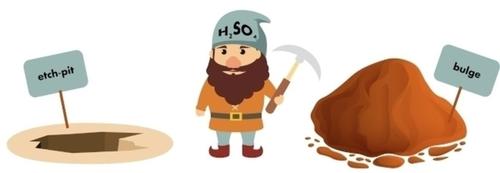当前位置:
X-MOL 学术
›
ChemNanoMat
›
论文详情
Our official English website, www.x-mol.net, welcomes your feedback! (Note: you will need to create a separate account there.)
Reactive Dissolution of Organic Nanocrystals at Controlled pH
ChemNanoMat ( IF 3.8 ) Pub Date : 2020-03-06 , DOI: 10.1002/cnma.202000024 Claudia Filoni 1 , Lamberto Duò 1 , Franco Ciccacci 1 , Andrea Li Bassi 2 , Alberto Bossi 3, 4 , Marcello Campione 5 , Giancarlo Capitani 5 , Ilaria Denti 6 , Matteo Tommasini 6 , Chiara Castiglioni 6 , Stefania De Rosa 7, 8 , Luca Tortora 7, 9 , Gianlorenzo Bussetti 1
ChemNanoMat ( IF 3.8 ) Pub Date : 2020-03-06 , DOI: 10.1002/cnma.202000024 Claudia Filoni 1 , Lamberto Duò 1 , Franco Ciccacci 1 , Andrea Li Bassi 2 , Alberto Bossi 3, 4 , Marcello Campione 5 , Giancarlo Capitani 5 , Ilaria Denti 6 , Matteo Tommasini 6 , Chiara Castiglioni 6 , Stefania De Rosa 7, 8 , Luca Tortora 7, 9 , Gianlorenzo Bussetti 1
Affiliation

|
The development of novel protocols and techniques for waste treatment represents the state of the art in the so‐called “green conversion”. Chemical wastes deriving from industrial and power‐station processes, which involve organic crystals, can be very hazardous for the environment. Studying their dissolution mechanism, both theoretically and experimentally, represents a mandatory step in the critical task of their disposal. Surprisingly, most of the studies are focused on millimeter scale length, from which one could estimate the crystal dissolution rate. In these studies, where no information about the dissolution mechanism on a molecular scale is provided, etch‐pit formation is recognized as the ultimate mechanism of crystal dissolution.
中文翻译:

pH控制下有机纳米晶体的反应溶解
用于废物处理的新颖协议和技术的发展代表了所谓的“绿色转化”的最新技术水平。来自工业和发电过程的化学废物涉及有机晶体,对环境非常危险。从理论上和实验上研究它们的溶解机理,是其处置关键任务中必不可少的步骤。出乎意料的是,大多数研究都集中在毫米级长度上,据此可以估算出晶体的溶解速率。在这些研究中,由于没有提供分子水平上的溶解机理的信息,因此刻蚀坑的形成被认为是晶体溶解的最终机理。
更新日期:2020-03-06
中文翻译:

pH控制下有机纳米晶体的反应溶解
用于废物处理的新颖协议和技术的发展代表了所谓的“绿色转化”的最新技术水平。来自工业和发电过程的化学废物涉及有机晶体,对环境非常危险。从理论上和实验上研究它们的溶解机理,是其处置关键任务中必不可少的步骤。出乎意料的是,大多数研究都集中在毫米级长度上,据此可以估算出晶体的溶解速率。在这些研究中,由于没有提供分子水平上的溶解机理的信息,因此刻蚀坑的形成被认为是晶体溶解的最终机理。

























 京公网安备 11010802027423号
京公网安备 11010802027423号